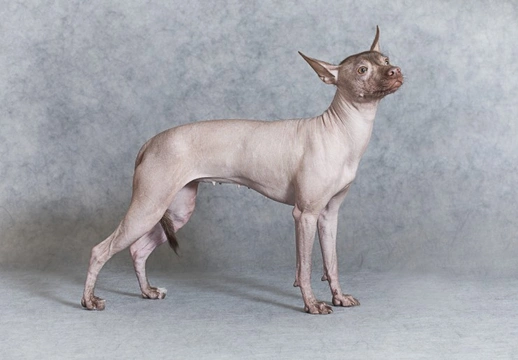
Some helpful facts and information about hairless dog breeds
There are four recognised breeds of bald or virtually hairless dogs, but as some of them are fairly uncommon within the UK, many dog owners would struggle to name any of them other than the Chinese Crested hairless variant! While some hairless dogs are indeed completely bald, others will have a very fine, light covering of hair across the entire body, and as is the case with the Chinese Crested and various others, can be seen in a normal, hairy variety as well!
If you are interested in hairless dog breeds or are considering getting one as a pet, it is a good idea to find out more about the breed you are considering, and the various considerations and traits of hairless dogs in general. In this article, we will share some helpful facts and information about hairless dog breeds. Read on to learn more!
Recognised hairless breeds
There are four recognised breeds of dog that are either hairless or have a recognised hairless variant, although aside from the Chinese Crested, the others are relatively uncommon within the UK.
The four hairless dog breeds that are formally recognised by most national and international breed organisations are:
- The Chinese Crested hairless variant.
- The Peruvian Inca Orchid, also known as the Peruvian hairless dog.
- The American hairless terrier.
- The Xoloitzcuintli or Mexican hairless dog.
More about the Chinese Crested dog
The Chinese Crested hairless variant is the most common hairless dog breed in the UK, and can also be found in a naturally furry variant, which looks completely different as a result, despite being otherwise identical!
The skin of the Chinese Crested is very fine and often dry, and needs a lot of care, and importantly, protection from the sun. They tend to get cold very easily in the winter, and are also more likely than most breeds to suffer from dental problems, due to the shape and construction of their jaws.
Dogs of the breed can weigh up to 10lb, and stand a maximum of 1ft tall at the withers. They are very loving and affectionate, and tend to love to play and be silly, and run around! However, they are also fairly delicate, and their skin is easy to bruise and injure.
The Peruvian Inca Orchid
The Peruvian Inca Orchid can again be found in both a hairless and a furry version, and the hairless variant in particular has particularly thin, fragile skin, which is prone to bruising easily.
They need regular bathing and moisturising in order to keep their skin in good condition, and of course, also need sunscreen when out in hot weather, and to be kept warm in the cold. They are loving, affectionate and rather quieter than the Chinese Crested, and make for excellent companions for people who have the time and inclination to devote plenty of time to keeping their skin in good condition.
The American hairless terrier
The American hairless terrier is actually born with a light coating of langue or baby hair, which then sheds and is not replaced as the pup grows to maturity. They tend to be prone to skin problems including allergies and rashes to a greater degree than the other hairless breeds, and notably, the breed has sweat glands in the skin, as opposed to only in the paws like most other dogs.
They are friendly and outgoing around their families, and tend to get on well with children, and are also usually calm and welcoming to strangers as well-however, they can make for good watchdogs, as they will bark to alert you of someone approaching. They are a reasonably muscular although lithe breed, with strong legs and other than their skin, a hardy, robust disposition.
The Xoloitzcuintli
The Xoloitzcuintli, often known by the rather easier to pronounce title of the Mexican hairless dog, can be found in three different sizes, being toy, miniature and standard. Again, dogs of the breed can be either furry or hairless, and it is not uncommon for dogs of both types to be born within the same litter! Dogs of the breed are very open, friendly and social with people and dogs that they know well, but tend to be rather shy and reticent around strangers.
Their skin again needs regular bathing, moisturising and care, and they also notably have particularly sensitive claws, which can make trimming them very challenging, and best carried out by a vet or a professional groomer who is familiar with the breed.
They are rather more robust in terms of their skin and general health than the other hairless breeds, but like all hairless dogs, need protection from both the sun and very cold weather.
Are hairless breeds hypoallergenic?
One thing that has served to raise the dog loving public’s general interest in hairless dog breeds in recent years is the assertion that such dogs are hypoallergenic due to their lack of fur, or in layman’s terms, unlikely to trigger allergies in people due to their hairlessness.
However, it is not actually dog fur that serves as an allergenic trigger, but rather skin proteins that are spread in dander, and while shed hair contributes to the spread of dander, it is the skin itself that produces it, meaning that essentially there is no such thing as a hypoallergenic dog!



